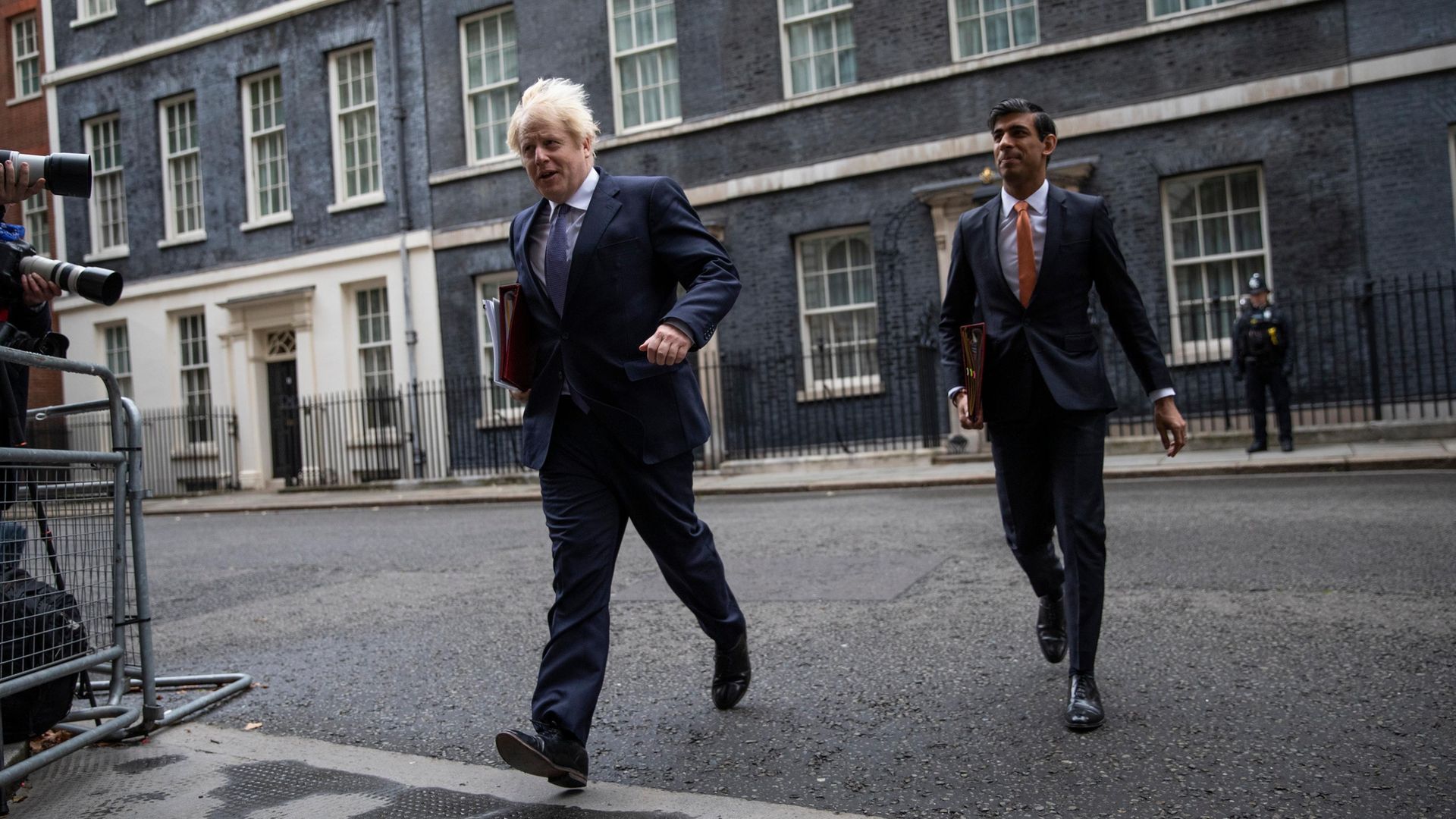
If the definition of insanity – apocryphally attributed to Einstein, though he never said it – is repeating the same thing and expecting different results, then the definition of idiocy must surely be facing an existential crisis and doing… nothing.
Coronavirus was an international crisis in March and remains an international crisis seven months on. But if the first UK wave of the virus hit London most fiercely, this time round it is the north of England that has been bearing the brunt of the disease.
In theory, it should be much easier this time. We have had months of preparation. We have the examples of almost every country, to let us see what works and what doesn’t. We have more information on what treatments help manage severe cases of Covid-19.
But that, alas, is only the theory. While there has been an undeniable learning curve in terms of the best way to treat patients, in terms of how the country can best curb the spread there seems much less clarity.
Huge swathes of northern England, as well as Scotland and Wales, have been under complex and quite severe restrictions, in some cases for months (some parts of Lancashire and West Yorkshire had just weeks in the summer after the last lockdown before enduring stricter rules than everywhere else).
The problem is that, in general, the restrictions have clearly been failing: not only have cases continued to rise across the country, but that growth has accelerated and the ‘r’ number has been considerably above one.
There are several explanations for the failure of the various measures to slow the spread of coronavirus, and the likely story is that all of them played a part.
Some blame hospitality venues, noting that the rules in force in certain areas against mixing households in pubs are hard to enforce and have been largely ignored by a public whose reserves of goodwill are at their last dregs.
Against that backdrop, schools have returned, and while children seem largely immune to the more severe effects of coronavirus – to the best of our current knowledge – they are able to spread it. Returning university students to their halls of residence, even as 18-24-year-olds are the most infected age group, also cannot have helped – even if they’ve subsequently been virtually imprisoned in their dorms and offered almost no face-to-face teaching.
It had been clear for weeks that the current system was not working. The government’s response through those weeks had been to brief – off the record, as ever – that a Three Tier system was coming, which would help manage local outbreaks and stop other areas reaching such infection levels. It was even suggested there might be clear guidance as to when each tier of restrictions would be triggered.
Any such hopes were quickly dashed when Boris Johnson started announcing the new system to the House of Commons. Making lockdowns sound like Starbucks, he announced they would come in three varieties: medium, high, or very high. To start with, only a cluster of councils around Liverpool would be in the ‘very high’ category; most of the rest of northern England would be ‘high’ and most of the rest of England was left in ‘medium’.
The tricky part came soon after: much as anyone who’s ordered a latte in a chain coffee shop knows you get the same milky soup no matter what size the cup, the differences between ‘medium’, ‘high’, and ‘very high’ lockdowns turn out to be far less than you might hope.
None of the three scenarios offer different advice to the vulnerable groups who earlier in the pandemic were told to shield. Whether the base rate of coronavirus is under 100 cases or over 900 cases per 100,000 people, the vulnerable are told to do the same thing. Advice to office workers is the same in each area; shops can stay open in every scenario, as can restaurants, and even most pubs (more on this later); schools and universities continue operating in every level of risk.
Even where there are differences between the levels, these are less distinct than you might imagine. In a high risk area, you can meet someone from a different household, but only outdoors – including in your own garden. In a very high risk area, you can still meet that person in a public park, but not in your garden.
Even in these very high risk areas – some of which, even taking into account our better testing system now, have comparable rates of coronavirus to the first March peak – pubs can remain open, albeit only if they follow an arcane set of rules.
A pub can open if it serves food that could reasonably be described as a main meal (one minister said a Cornish pasty could qualify, but only if it was served with chips or salad), and can serve alcohol to anyone ordering such a meal.
The result is a system which doesn’t actually simplify the rules at all, and which for around 95% of the country doesn’t change the rules in the slightest compared with what they were on the day of the announcement. And even moving up to the highest level would involve only the most minor of changes.
As plans to tackle coronavirus go, this one appears to represent sitting tight and hoping coronavirus goes away by itself. Northern mayors are understandably furious. London mayor Sadiq Khan has complained about the inadequacy of the measures. Chief medical officer Chris Whitty all but trashed the new plan on live television, directly from a government podium, when he warned that Tier Three on its own would not be enough to stop the virus.
Boris Johnson helms a government whose majority relies on northern seats traditionally held by the Labour party. His polling there has, so far, held up well – but goodwill is diminishing rapidly. Voters in so-called Red Wall seats had just as little patience for Dominic Cummings’ lockdown rule-breaking as everyone else.
They now face the threat of having their jobs destroyed and their loved ones dying. The reaction to these latest measures suggests confidence in them will be in short supply.
Communities went into the last lockdown with some stoicism and sense of common, even national, purpose. It is hard to see such attitudes prevailing with these piecemeal measures.
There has not only been a summer of cack-handed and confusing messages about how to tackle the virus, there has also been the conspicuous failure of the Test and Trace system to control the pandemic.
When the country emerged from the last lockdown, this “world-beating” system was supposed to be key to keeping the virus at bay and society open. For various reasons, it has not proved up to that ambitious task. It is likely to become even less effective as it falls further behind case numbers.
Cynicism and weariness are spreading as swiftly as Covid itself. And as northern England bears the brunt of the second wave, that is likely to be particularly the case there.
The north voted for Johnson (at least in larger numbers than usual – northern England still has more Labour voters than Tories) on the belief he would actually do something for them, unlike other Conservatives before him. Once shattered, that illusion won’t return. Boris Johnson is not responsible for the coronavirus, but he is responsible for tackling it – and is expected to do so effectively. One straw in the wind was provided by Chris Green, the Tory MP for Bolton West, who resigned as a parliamentary private secretary this week in protest at the Greater Manchester lockdown, arguing that the measures thus far had failed and that the “cure is worse than the disease”.
Unsurprisingly, there is little reason for hope. A release of documentation from the official SAGE expert panel shows the government can no longer claim it is following the science.
The documents showed that just three weeks ago, the panel recommended five measures be introduced. In the event, only one of them – for people to work from home where possible – was taken up by the government.
Critically, one of the recommended measures was for a short but strict national lockdown – not, this time, to buy time for the government to prepare (that window has been and gone) but rather just to break the exponential
curve and buy some time to drop the background infection rate across the country.
The scientists also warned that failing to enact such a ‘circuit breaker’ early would mean that when one was eventually introduced it would need to continue for far longer to be effective – meaning it would come with a much higher economic cost, and probably at the cost of much more pressure on the NHS, and more avoidable deaths.
On Tuesday, Keir Starmer added his support to the scientists’ call, his strongest public opposition to the government’s corona strategy yet, and a move that puts Johnson in a difficult spot, politically. He has long called for Starmer to make clear exactly what his position on the virus is. The Labour leader has now done so, positioning himself alongside the PM’s own advisers, and urging him to follow the science.
The government has fundamentally failed in its most basic duty, protecting the citizens who elected it. Trapped in a false dichotomy between protecting the economy and fighting the disease – a proper plan would do both, a bad one does neither – they have created a false compromise that is doomed to fail.
If there is hope, it lies in Christmas. Not for some religious reason, but for the desperation of Johnson to give people something resembling a normal holiday season (especially unfair given the disruption to Eid).
Scientists will be pushing him to enact a lockdown “to save Christmas” as soon as possible. Our best hope is this message gets through, where nothing else has. Sleighbells ring – will he listen?










